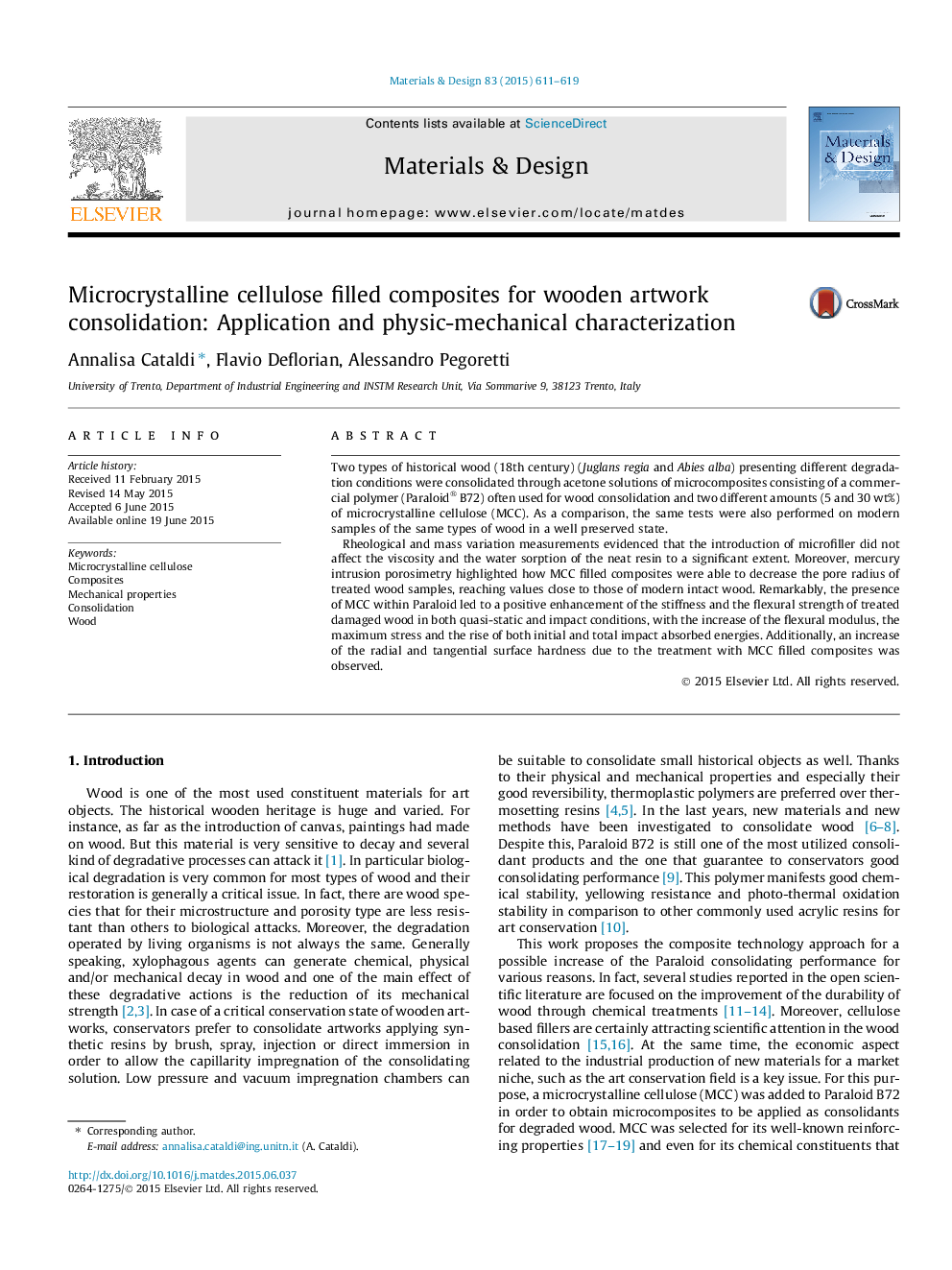| Article ID | Journal | Published Year | Pages | File Type |
|---|---|---|---|---|
| 828473 | Materials & Design | 2015 | 9 Pages |
•Microcomposites made of Paraloid B72 and microcrystalline cellulose were prepared.•The experimental composites were dissolved in acetone making consolidant solutions.•Historical damaged wood samples were treated with the consolidating solutions.•An extended microstructural and physic-mechanical characterization was performed.•Microcellulose effect on the consolidating properties of Paraloid B72 was evaluated.
Two types of historical wood (18th century) (Juglans regia and Abies alba) presenting different degradation conditions were consolidated through acetone solutions of microcomposites consisting of a commercial polymer (Paraloid® B72) often used for wood consolidation and two different amounts (5 and 30 wt%) of microcrystalline cellulose (MCC). As a comparison, the same tests were also performed on modern samples of the same types of wood in a well preserved state.Rheological and mass variation measurements evidenced that the introduction of microfiller did not affect the viscosity and the water sorption of the neat resin to a significant extent. Moreover, mercury intrusion porosimetry highlighted how MCC filled composites were able to decrease the pore radius of treated wood samples, reaching values close to those of modern intact wood. Remarkably, the presence of MCC within Paraloid led to a positive enhancement of the stiffness and the flexural strength of treated damaged wood in both quasi-static and impact conditions, with the increase of the flexural modulus, the maximum stress and the rise of both initial and total impact absorbed energies. Additionally, an increase of the radial and tangential surface hardness due to the treatment with MCC filled composites was observed.
Graphical abstractOptical microscope images of long cross-sections of damaged walnut wood samples. (a) Before and (b) after treatment with Paraloid/MCC composite.Figure optionsDownload full-size imageDownload as PowerPoint slide
